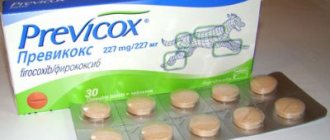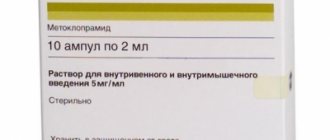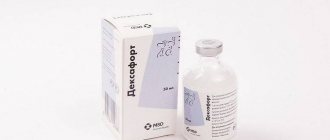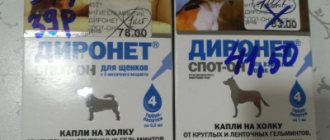It is simply impossible to protect a dog 100% from possible helminthic infestation. But if you know the “enemy by sight”, it is much easier to fight him even in such a situation. All the most up-to-date information about roundworms.
The roundworms that parasitize the dog's body are called toxocara. These are round worms of different sexes with the body length of some adult females up to 18 cm. Each female is capable of laying over 200 thousand eggs during the day. Worms parasitize in the small intestine of a dog, feeding on its food masses.
Development cycle of Toxocara
The full development cycle of Toxocara sometimes takes several years and goes through several stages.
Stage 1. With the dog's feces, the eggs are released into the environment, more often into the soil, where they continue to develop. But they will become infectious only after an average of 20 to 30 days. Until this time, the egg is a spherical blastomere without a larva inside.
Within a month, the infected feces are broken down and the eggs appear on the soil surface. Withstanding the most unfavorable conditions, they are able to exist for several years until they penetrate the body of an intermediate host or are directly swallowed by a dog.
The role of intermediate hosts is played by small rodents, cockroaches, earthworms, livestock and humans.
Stage 2. In the stomach of the animal, the egg shell dissolves and the larva emerges. Through the intestinal wall it enters the general bloodstream, from where it migrates to the liver and remains there for 1-2 days.
After this, passing through the right heart, it penetrates the lungs and trachea. This type of migration is called hepatopulmonary. During the migration process, the larva undergoes its first molt.
But some larvae are characterized by a somatic type of migration - directly into the pulmonary vein. Such situations arise when a dog swallows a large number of eggs at the same time.
In this case, the larvae form into a cyst (encapsulate), and in this state they are able to exist in most internal organs, including the central nervous system, from several weeks to several months.
Stage 3. After the next stage of maturation, the larva leaves the cyst and moves with the bloodstream to the lungs, trachea and larynx. In a dog, this movement provokes a cough, due to which the larvae end up in the mouth, are re-swallowed and thus enter the intestines.
Stage 4. The last stage of molting occurs in the intestine, after which the larva becomes sexually mature.
What is ascariasis?
This is a parasitic infestation caused by the penetration of larvae and subsequent damage to internal organs by adult worms. When implying infection of a dog, it is correct to use the term toxocariasis.
Cestodoses
What worms do dogs have that are common to humans:
- Echinococcosis.
- Diphyllobothriasis.
- Dipylidiasis.
For reference! Tapeworms are a “collective” of one individual, the front segments are males, the rear segments are females. The fertilized and mature fragment is torn off from the end and exits through the anus. The segment is light, oblong-flattened, has mobility, can move along the animal’s fur and from there get onto external objects.
Echinococcus
Cestode, 0.5 cm long, 3-4 segments, the dog is the definitive owner. And it becomes infected by eating thermally unprocessed, untested meat from an intermediate host that contains larvae.
How can you tell if your dog has worms? The main symptom of echinococcosis in a dog is itching in the anus. Otherwise, the disease can pass without obvious symptoms, but in severe cases, constipation can alternate with diarrhea, conjunctivitis is diagnosed, and the dog looks unkempt in appearance.
Dipylidia (cucumber tapeworm)
It is provoked by a cestode up to 70 cm long. The intermediate hosts of the helminth are fleas and lice-eaters; it is when they bite them that the dog becomes infected with tapeworm larvae. The parasite becomes sexually mature inside the pet after 4 weeks.
Diphyllobothriasis
It is more often diagnosed in northern dogs that are fed raw fish. The intermediate host of the parasite, crustaceans and fish that live in water, the larva penetrates the muscle tissue of the fish, from there into the dog’s gastrointestinal tract, and in the intestine a sexually mature individual can reach 6 m.
Reasons for appearance
In adults
Due to the fecal-oral nature of the invasion, roundworm eggs penetrate the dog’s body extremely quickly and easily:
- feeding the dog insufficiently thermally processed or raw meat;
- eating feces;
- contaminated drinking water;
- unwashed vegetables;
- eating an intermediate host: mouse, rat, cockroach, worm or bird;
- contact with a dog infected with roundworms (licking and sniffing, active games);
- penetration of eggs along with soil and dust.
Intrauterine infection
Puppies become infected with roundworms from their mother through the transplacental (intrauterine) or galactogenic (with milk) route.
Other methods of infection
However, more than 90% of cases of infection occur through the alimentary method , when parasite larvae that enter the external environment are swallowed by animals. The fact is that female roundworms are incredibly fertile; their eggs can almost always be found in the soil. When your dog is playing, eating or drinking, he is more likely to eat them.
From eating infected animals. Roundworm eggs can be found in worms, frogs, rats (the so-called intermediate and reservoir hosts). In these creatures, the worm will never grow to its adult state, but if a dog eats the same frog, the parasite will not miss its hold.
Symptoms
The owner can learn about the presence of ascaris in the body of an adult dog or puppy by the following manifestations:
- diarrhea alternates with constipation;
- sometimes causeless restless behavior;
- anemic mucous membranes;
- hoarse breathing with shortness of breath, paroxysmal cough, nasal discharge;
- weak growth and weight gain in puppies;
- a swollen and painful abdomen on palpation;
- pathologically increased or, conversely, very weak appetite;
- perverted appetite, in which the dog eats stones, chalk, other people's feces, swallows earth, sand or clay;
- dry and dull tousled coat with dandruff;
- hair loss;
- flatulence;
- roundworms or their fragments in vomit and excrement;
- convulsions up to an epileptic seizure.
Signs of infestation are most pronounced in young dogs and puppies.
general information
Roundworms are the common name for parasitic species of nematodes , that is, roundworms. There are practically no dogs that do not suffer from diseases caused by these types of parasites at least once in their lives. Worms of the genus Toxocara are most often found in dogs. Note that these parasites are much more dangerous than the cat variety; these roundworms can be transmitted from dog to person in more than 80% of cases .
Adult roundworms live in the dog's gastrointestinal tract , where they feed on partially digested food and (some species) the lining of the digestive organs, as well as blood. Small puppies often die as a result of roundworm activity due to severe intoxication and severe exhaustion. Note that it is young dogs that most often suffer from ascariasis, since their immune system is very imperfect and therefore cannot properly resist the invasion process.
Diagnostics
Diagnosing toxocariasis is quite simple based on the results of a stool test and a blood test for antibodies to toxocariasis. Fecal analysis reveals the presence of both eggs and larvae, as well as grown individuals. And an immunological blood test allows you to determine the invasion at the very initial stage.
In this case, the most informative result can be obtained from the blood of a dog that has not been treated for helminths.
Sometimes, in the presence of a number of typical symptoms, a negative result is obtained. This is not an error, and the situation is explained by three reasons.
- Too little time has passed since the infection and antibodies have not yet developed.
- The dog has toxocariasis in a late stage, and the body has stopped fighting roundworms.
- The animal is free from Toxocara.
Types of helminths
There are many types of internal parasites in the world, but the most common types of worms in dogs are the following:
- Nematodes (roundworms).
- Trematodes (flukes).
- Cestodes (tape).
According to the place of localization (parasitism), parasites are: liver, pulmonary, intestinal, subcutaneous, cardiac. The most common and frequently diagnosed are roundworms in dogs, Toxascaris leonina or canine roundworm, a nematode that reaches a length of up to 20 cm and affects cats and humans.
Forecast and consequences
For the life of a puppy, the most dangerous infection is intrauterine and galactogenic. Such an invasion can lead to death within a few days after birth.
The movement of larvae through the lungs of an adult animal provokes hoarse breathing, shortness of breath and nasal discharge. These are indicators of the manifestation of pneumonia. And accumulations in the intestines of adult worms are extremely dangerous due to its blockage and subsequent rupture.
Dead roundworms produce toxic ascaridine, which provokes the rapid development of neurological disorders. Thus, massive decomposition of parasites leads to severe convulsions and even death of the dog.
Alarm club: can you get roundworms from a dog?
Helminths multiply rapidly, which is why most puppies are infected with dangerous parasites from birth.
"roundworms in dogs are transmitted to humans
Knowing about the mortal danger of roundworms for a pet, the owner can hardly be calm about the health of his four-legged friend. Happy moments of life next to a puppy are overshadowed by the likelihood that roundworms in a dog will be transmitted to humans. Roundworms in dogs are especially dangerous for children who spend a lot of time with their pet, kissing and hugging it.
To find out if your dog has roundworms, observe your pet, you may notice alarming symptoms. Read about them below.
What to do?
Treatment with drugs
Therapy for toxocariasis involves taking only veterinary anthelmintics. Considering that several types of worms coexist in a dog’s body at the same time, drugs for treatment must be broad-spectrum.
- Gelmex is acceptable for treating even 3-week-old puppies; minimum side effects.
- Tenac has a wide spectrum of action: it is effective not only against Toxocara, but at the same time destroys tape and whip-shaped parasites. Strictly contraindicated in dogs with heartworms and does not allow wearing a flea collar. In this case, Tenac is replaced by Verkom, Caricide, Panacur or Mebendazole.
- Milbemax is an effective product flavored with the smell of meat.
- Prazitel is a suspension for both puppies and adult dogs.
- Kanikquantel is a highly toxic drug. Eliminates ascaris after a single dose. It is prescribed to puppies with great caution.
- Helminthal C – used to eliminate roundworm eggs in a dog’s fur.
the drug Ivermectin is strictly contraindicated for puppies under 4 months and dog breeds with a dolichocephalic head shape: collies, collie mixes, some terriers, bobtails, shelties and briards. There is a threat of severe intoxication with fatal outcome.
Drontal or Drontal plus and oxybendazole-based products also show excellent results For example, Polyverkan .
Regardless of the specific drug, in most cases treatment is repeated after 2 or 3 weeks. In this way, the maximum number of constantly migrating larvae will be destroyed.
Deworming at home
The dosage of any anthelmintic drug should be selected by a veterinarian in strict accordance with the weight of the dog. Particular caution is exercised when prescribing dosages for puppies. Treat toxocariasis exclusively in the clinic.
Traditional methods
Various folk remedies are questionably effective even in treating helminths in people, not to mention dogs. It is unlikely that the animal will be happy to eat garlic or pumpkin seeds. And delay without full treatment for toxocara in a puppy can result in his death.
Can they go out on their own?
Spontaneous release of roundworms with excrement or vomiting occurs in cases where the number of helminths has become critical. In such a situation, the animal needs emergency veterinary care.
It is possible to defeat parasites!
Antiparasitic Complex® - Reliable and safe removal of parasites in 21 days!
- The composition includes only natural ingredients;
- Does not cause side effects;
- Absolutely safe;
- Protects the liver, heart, lungs, stomach, skin from parasites;
- Removes waste products of parasites from the body.
- Effectively destroys most types of helminths in 21 days.
There is now a preferential program for free packaging. Read expert opinion.
Read further:
Intermediate host of roundworm and its life cycle of development in the body
Life cycle of development of the human roundworm, stages of development of the parasite in the body
Where does the roundworm larva develop: stages of development of the human roundworm
Roundworms in cats: life cycle of the parasite and how to treat it
Ascaris - coelenterate parasites, structure, life cycle of development
Ascaris larva: development cycle, migration, what they look like and how to destroy
In pregnant women, lactating women and puppies
Somatic larvae are localized in the heart, lungs, muscles, kidneys and liver of the bitch infected before pregnancy. Under hormonal influence during pregnancy, they are transformed from hypobiosis and find themselves in the systemic circulation.
In the last trimester of pregnancy, Toxocara penetrates the fetus through the placenta. In the first days after birth, the larvae are found in the lungs of puppies, and already on the 10th day they can be found in the duodenum.
In the small intestine of babies, they finally reach puberty. And the somatic larvae that have reached the mammary glands begin to be actively excreted along with milk a few days after birth.
Deworming of the bitch is strongly recommended before mating and 21 days after birth. At the same time, preventive treatment of puppies is also important.
With ascariasis, age-related resistance to infection is quite clearly expressed. The older the dog, the more larvae undergo only somatic movement, and the fewer of them ultimately penetrate the intestines.
But in puppies less than 1 month old, the migration of larvae occurs according to the hepatopulmonary type with rapid intestinal localization. As a result, the largest number of roundworms is localized in the body of a three-month-old puppy.
With adequate timely treatment, this number continues to decrease, and by an older age, either somatic larvae or a small number of adult roundworms may be seen in the dog.
How to prevent infection
Prevention of worms in dogs involves preventing the pet from becoming infected, although this is the most difficult point for the owner to accomplish. However, it is necessary to minimize the risks and systematically carry out planned prevention, and if symptoms of infestation appear, contact a veterinary clinic and begin treatment of the dog.
To prevent worms from being passed on to offspring, the bitch and male must be dewormed 14 days before the intended mating. Puppies have their own deworming regimen; on average, medications are started 10 days before the first vaccination.
During the period of activity of blood-sucking insects, the pet is treated with repellents; prevention against skin parasites - ticks, fleas - is mandatory. It is necessary to keep the dog in proper conditions, wash it regularly, wash the pet’s personal belongings, bathe it, examine the ears, skin, and fur.
At the slightest suspicion that your dog is unwell, you should contact a veterinary clinic. A simple examination by a specialist will allow you to timely identify/exclude a number of health problems and begin treatment at an early stage of pathology development, without aggravating its course.
Are they transmitted to humans?
Dog toxocara very easily penetrates the body of both humans and other dogs. This occurs after direct contact with the fur of an infected dog, soil, unwashed vegetables and fruits, and thermally poorly processed meat.
To completely protect yourself from possible infection, it is not recommended to kiss a dog on the face, regularly deworm the animal, dispose of dog and cat feces in a timely manner, wear gloves when working with soil, and wash your hands with soap and water every time before eating.
Morphology
The helminth is gray-yellow in color. The length of the body of an adult individual can reach from 9 to 18 cm. A distinctive feature is the presence of cuticular wings, which noticeably protrude in a semi-arc. The male's tail is curved. The characteristic feature of the species is the “ventricle” located between the intestines and the esophagus. The eggs of the parasite are round in shape and dark gray in color. Their cellularity is well differentiated.
An adult remains viable for up to 6 months. A female can lay more than 200,000 eggs per day. In the ground they ripen from 5 to 36 days. Eggs in compost can be dangerous for about 10 years.
Prevention
There are several ways to prevent canine roundworm infection in dogs and people. Regular deworming of the animals themselves, especially if they are often outdoors.
Good practices for preventing infection in humans include hand washing before eating and after disposing of animal excrement, which should be done promptly (before maturation) as many disinfectants simply do not kill eggs. Teaching children not to eat soil, cooking meat at a high enough temperature to kill infective larvae.
Therapy
Treatment is carried out using veterinary anthelmintic drugs. Milbemax is most often prescribed. It can be used in puppies from one and a half months, but is not applicable for bobtail, shelter and border collie breeds.
Do not dose the drug to individuals weighing less than 500 grams. The treatment regimen and dosage differ depending on the size of the animal.
For small dogs the rules are:
- For weights up to 1 kg, half a tablet of medication is used;
- Weight from 1 to 5 kg – one tablet;
- Weight from 5 to 10 kg – two tablets.
For large dogs:
- Up to 25 kg – 1 tablet;
- From 25 to 50 kg – 2 tablets;
- From 50 kg – 3 tablets.
The product is mixed with food. Some owners know how to feed the whole tablet. The good thing about the drug is that it is multifunctional, that is, it can cure an animal of several types of worms. It is used once; if it is not effective, the doctor may prescribe a second dose.
In addition to this drug, the animal may be prescribed:
- Drontal is an effective multifunctional drug for single use;
- Kanikvantel is a medicine effective against toxocara;
- Pratel is a drug that acts against several types of worms.
Any medications for worms are quite toxic, and therefore should be used only as prescribed by a veterinarian.










